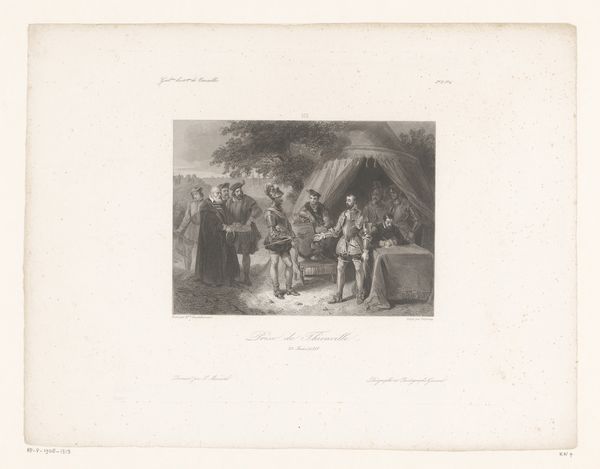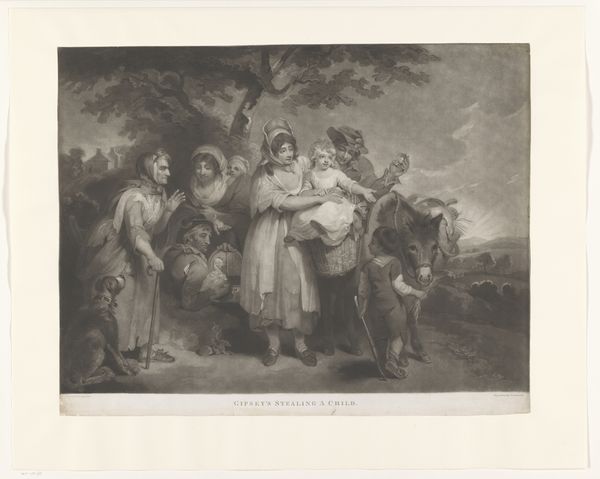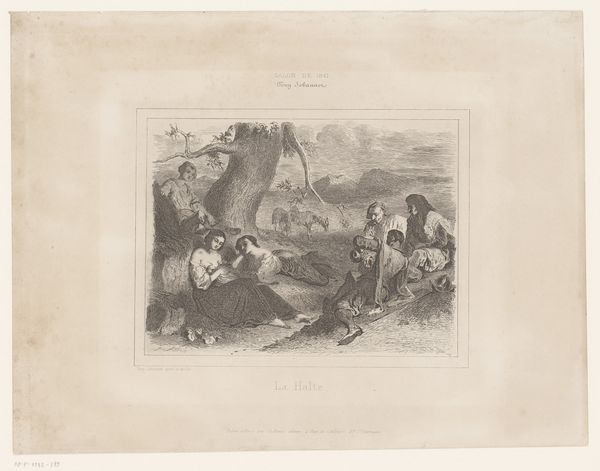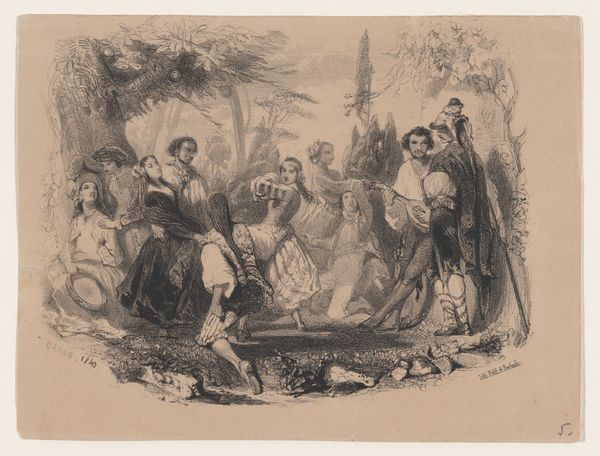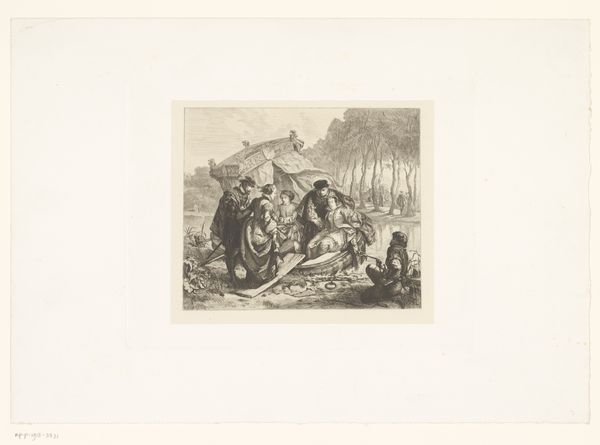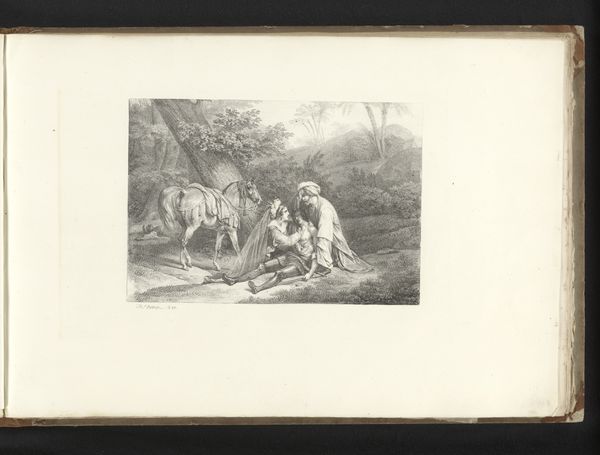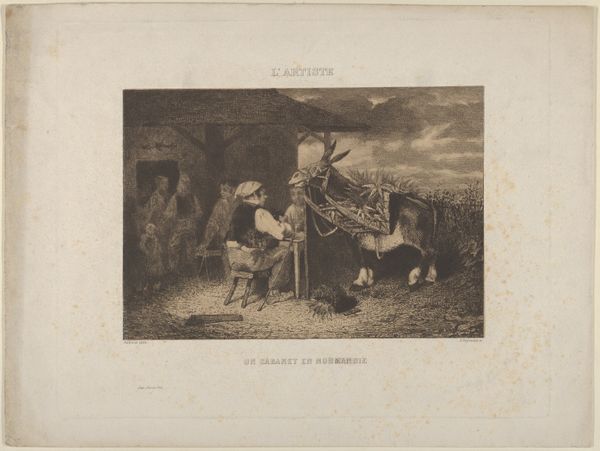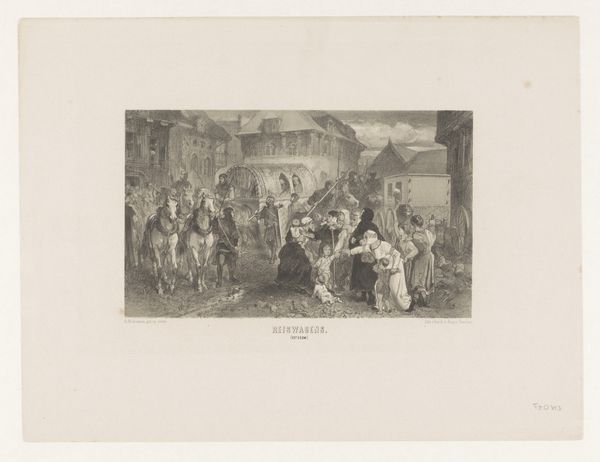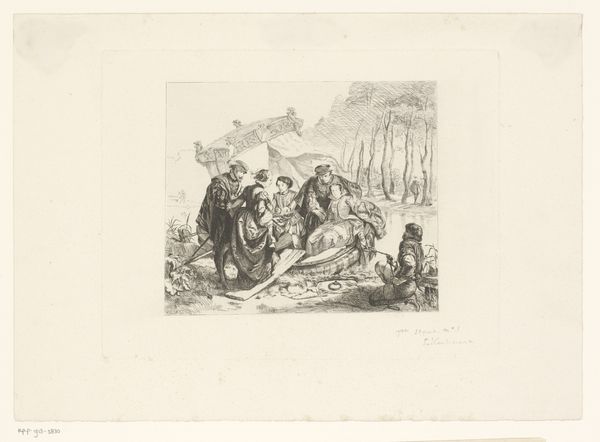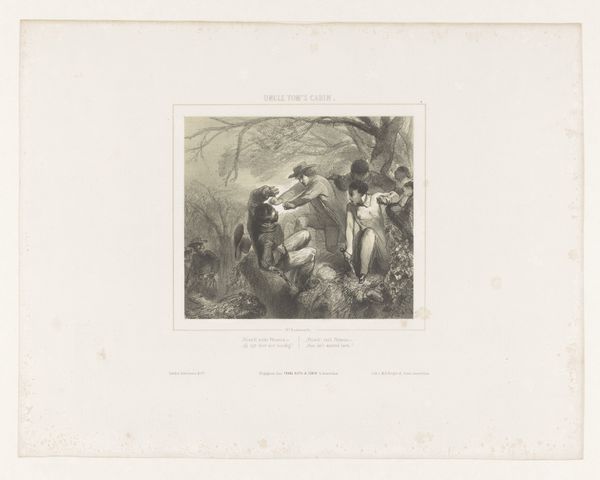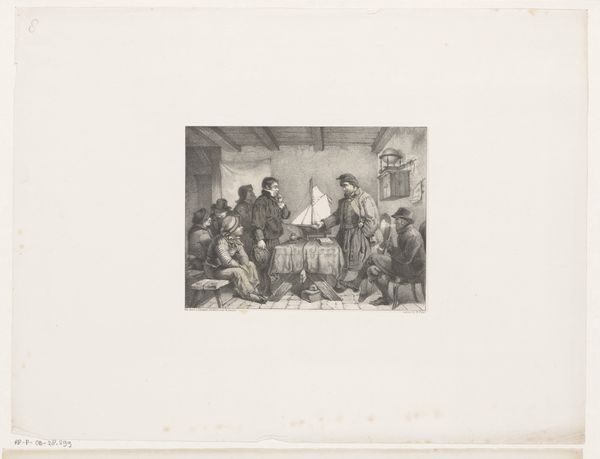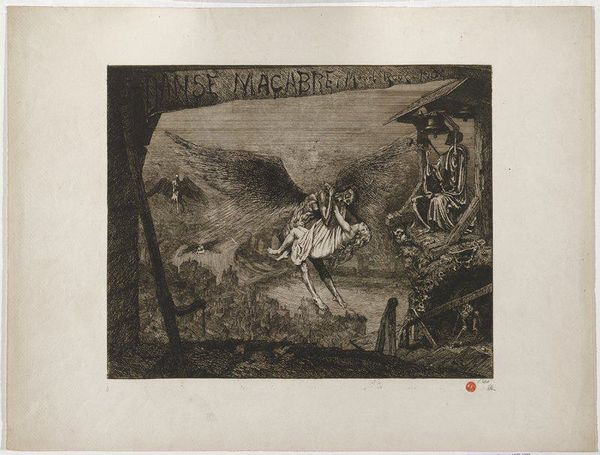
print, engraving
# print
#
landscape
#
charcoal drawing
#
figuration
#
romanticism
#
19th century
#
genre-painting
#
engraving
Dimensions: height 504 mm, width 595 mm
Copyright: Rijks Museum: Open Domain
Curator: This engraving, attributed to Robert Graves and dating from 1808 to 1873, is entitled "Schots gezin voor een hut met whisky destilleerderij," which translates to "Scottish Family in Front of a Hut with Whisky Distillery." It seems like a tranquil depiction of domestic life, yet... I find something unsettling in the overall arrangement. Editor: Unsettling? To me, it evokes a rather conventional image of Romantic-era picturesque poverty. The family gathered around their modest home, framed by the sublime, if faintly rendered, Scottish landscape. There is a feeling of simple dignity in the face of hardship. Curator: Perhaps, but let’s examine the composition. The dark hovel dominates the center, almost consuming the figures. While the distant mountains are aesthetically pleasing, the immediate environment appears almost suffocating. Note also the prominence of the whisky still, not merely functional but centrally located. This isn't just a scene of rustic living. It feels deliberately staged to imply reliance on the industry. Editor: Indeed, the whisky still is hardly discreet! Considering the period, this print enters a long history of romanticized views of rural life often circulating in urban centers. The work subtly raises questions of social conditions and economic practices. The family's attire, the presence of the dogs, and the implication of distilling offer a particular perspective of 19th century social order. Curator: Precisely. Consider too the dog lapping at the contents of a skull – perhaps of a cow or deer – at the forefront. Symbolically, this speaks volumes about the precariousness of life, about humans' complicated position amidst nature, especially when that nature becomes their source of livelihood. It complicates this reading as pure Romantic idyll, does it not? Editor: It undeniably adds a layer of complexity, suggesting an entanglement between life, death, and the industry. But doesn't this also reveal the print's role in constructing a specific idea about Scottish identity at the time? These sorts of representations, while perhaps tinged with hardship, fed into broader cultural narratives about Scotland and its people. Curator: True, and understanding the iconography allows us to question how these narratives were crafted and what socio-economic realities they often obscured. It transforms a seemingly quaint genre painting into a commentary about the relationship between poverty, identity, and enterprise. Editor: I find it captivating how closely intertwined cultural identity, commerce, and domesticity appear. The image clearly presents numerous insights into the historic and political conditions from whence it originated. Curator: I agree completely; it offers a surprisingly intricate narrative hidden behind a seemingly simple portrayal of 19th-century Scotland.
Comments
No comments
Be the first to comment and join the conversation on the ultimate creative platform.
